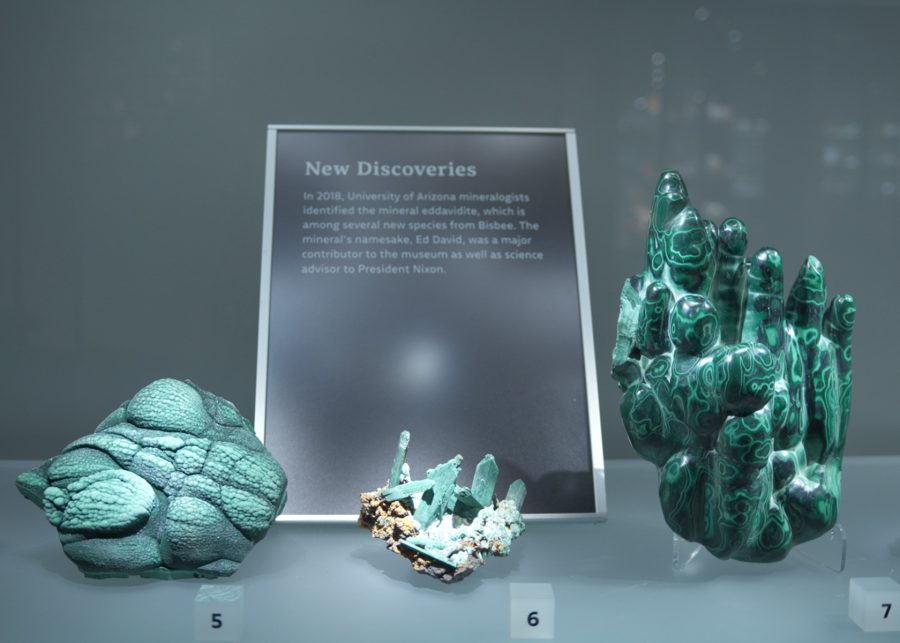The University of Arizona’s new Alfie Norville Gem & Mineral Museum in downtown Tucson is an ode to the Tucson community and its gem and mineral enthusiasts. A glittering collection of gems and minerals has taken up residence in the historic Pima County Courthouse and is now open to the public.
Before the new museum opened, the university’s own collection of gems and minerals was housed primarily in the lower level of Flandrau Science Center on campus.
“There were a couple of issues,” Joaquin Ruiz, the executive director of the museum, explained. “The Tucson Gem and Mineral Show is one of the most important events that our city has. We have an amazing collection of minerals and gems at the University of Arizona and they were occluded in the basement.”
Ruiz explained that moving the collection to a new location downtown was a win-win. The new museum makes the collection more accessible to the public as well as to the Tucson Gem and Mineral Society.
RELATED: What it means to be ‘Out in STEM’
Exhibit specialist Elizabeth Gass designed the 12,000 square feet of exhibit space, none of which was wasted. The museum features the standard glass cases of gem and mineral specimens alongside hands-on exhibits and a recreation of a section of the Bisbee Queen Mine. The recreation is a favorite of Gass.
“Bringing people in and watching them come around the corner … people’s eyes light up,” Gass said.
The most striking piece in the collection is the jeweled tapestry that is currently on loan to the museum. Made of 26,000 gems and gold, Ruiz and Gass both consider it a must-see for anyone visiting the museum.
“It’s just unbelievable to me that somebody could create such a masterpiece,” Ruiz said, pointing out that the gems are all cut into the same shape in order to refract and reflect light in the same way.
Gass explained how the new space provides a unique opportunity to engage the public in earth sciences. A classroom underneath the exhibit floor will be used for community outreach, while labs within the building will be used for research. As the museum connects with local schools and organizations, they’re looking forward to hosting field trips, educational events, and other outreach programs.
“We’re really hoping to make that connection with students and get them involved,” Gass said. “Because that means we get to do fun stuff.”
RELATED: Women in STEM at the UA
Minerals play a role in many aspects of day-to-day life — a fact that the museum wants to convey to more people.
“In Arizona, we have … an incredible amount of mining,” Gass said, “Not a lot of people know how much mining actually impacts our everyday lives.”
An interactive, hands-on section of the exhibit allows patrons to explore which minerals are in the products they use, and where those minerals come from.
The new museum means new opportunities for university students interested in geosciences and gemology. Currently, the UA offers classes on gemology. Ruiz hopes that the university will be able to expand opportunities for students to learn about geology and gemology with the museum.
As the museum grows and makes connections with local schools and organizations, the museum is hoping to provide opportunities for students to participate in outreach.
“I’m quite biased because I’m a scientist, and I think it’s a terrific lifestyle,” Ruiz said, “and if I can get more kids to be excited about science, I can make more kids have a great life.”
Current opportunities for students include internships and the museum’s docent program. Students can find information about both on the museum website.
Follow Hannah Johnson on Twitter









